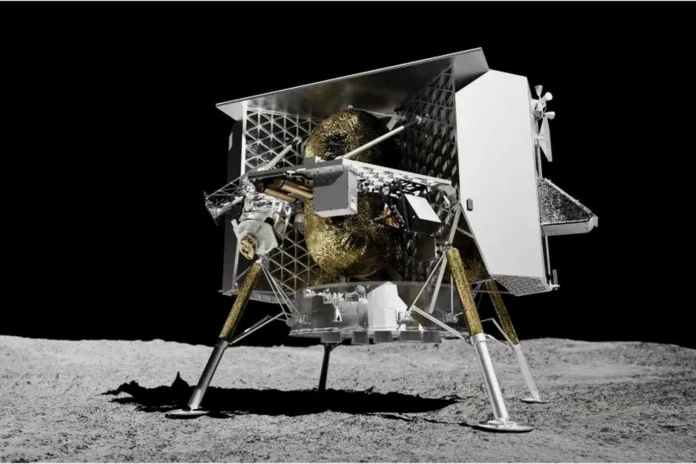The first American spacecraft built for the Moon since the Apollo era launched on a daring mission in January 2024, only to encounter a twist of fate in the vast celestial void. Peregrine Mission-1, carrying hopes of a groundbreaking lunar touchdown, ultimately found itself orbiting the Moon in a testament to human resilience and the ever-evolving landscape of space exploration.
A Blazing Launch of Peregrine Mission-1
On January 8th, the pre-dawn Florida sky lit up with a fiery spectacle. Beyond the initial flight of the powerful Vulcan Centaur rocket, the Peregrine lander, gleaming silver under the spotlights, floats towards the heavens. This wasn’t just a launch but a symbol of America’s renewed lunar ambitions, a technological torch passed from the legendary Saturn V to the modern Vulcan.
Technical Issues Affecting the Mission
However, technical bad luck emerged hours after the exhilarating separation from the rocket. A fuel system pressurization issue threw the lander off its carefully calculated course, preventing it from maintaining the crucial sun-pointing orientation needed for a safe landing. With this, the dream of a lunar touchdown faded, replaced by the stark reality of a potential mission failure.
Peregrine Mission-1’s Refusal to Surrender
But the engineers behind Peregrine mission-1, a team fueled by decades of experience and firm determination, refused to throw in the towel. They carefully analyzed the situation, struggling with the oddity while exploring alternative paths. The Moon, now intriguingly close, was no longer the immediate destination, but the spirit of exploration remained firm for the team.
So, with ingenious resourcefulness, the team changed the mission’s objective. With enough fuel, they directed Peregrine towards a lunar orbit, a success no commercially developed spacecraft had ever achieved. This orbit wasn’t just a consolation prize but a new frontier, a platform for scientific discovery and technological testing in the lunar arena.
Current Status and Future Prospects
Peregrine mission-1 gracefully circles the Moon, its instruments gathering valuable data and its onboard payloads pushing the boundaries of lunar exploration. Astrobotic, the company behind the mission, is now evaluating its options, and the possibilities are increasing:
- Science in Orbit: Peregrine mission-1’s payloads, including a NASA-developed instrument searching for lunar resources like water ice, can continue their scientific investigations from the unique viewpoint of the lunar orbit.
- Tech Testing Ground: The lander can serve as a testbed for future technologies, filtering the systems and procedures for the next generation of lunar explorers.
- Second Landing Attempt: Though challenging, a landing at a different lunar location with less demanding terrain is only partially out of the question.
Lessons To Be Learned For The Path Forward
While the original lunar landing goal still needs to be fulfilled, the importance of Peregrine Mission-1 must be recognized. It showcased the courage of American commercial spaceflight, proving that private companies can not only dream big but also adjust and innovate in the face of adversity. The successful launch of the Vulcan Centaur rocket and the unprecedented lunar orbit demonstrate the immense potential of this technology for future missions.
The technical challenges encountered during Peregrine Mission 1 offer valuable lessons for future lunar adventures. Companies like Astrobotic can pave the way for more reliable and resilient spacecraft by carefully analyzing the anomaly and refining their designs. This mission also highlights the critical role of collaboration between public and private entities in pushing the boundaries of space exploration.
Peregrine Mission-1 may not have landed on the Moon, but it imprinted its unique path in the lunar records. It is a testament to human creativity in the ever-evolving landscape of space exploration and the firm spirit of discovery that compels us to reach for the stars. While the lunar surface awaits future footprints, Peregrine’s orbital journey marks a significant step forward in the human journey towards our neighboring stars.



